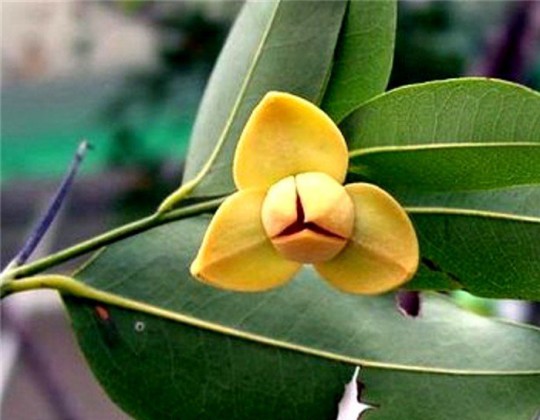Tror Yorng (Giant Ibis): The National Bird of Cambodia
Giant Ibis (Tror Yorng) is a species of bird that is identified as a symbol for the Cambodian nation. The adults have overall dark grayish-brown plumage, with a naked greyish head, and upper neck. There are dark bands across the back of the head and shoulder area and the pale silvery-grey wing tips also have black crossbars. The beak is yellowish-brown, the legs are orange, and the eyes are dark red. This is the largest of the world’s ibises. Adults are reportedly 102-106 cm long, with an upright standing height of up to 100 cm, and are estimated to weigh about 4.2 kg.

Among standard measurements, the wing chord is 52.3-57 cm, the tail is 30 cm, the tarsus is 11 cm and the culmen is 20.8-23.4 cm. the hunt for Giant Ibis has been banned by the Prakas 359 dated August 1st, 1994, officially declared by the Ministry of Agriculture, Forestry, and Fisheries.
In the past, these species have been found anywhere in Southeast Asia and it was still fairly common in the Mekong Delta until the 1920s but is now almost depleted, with a small remnant population breeding in northern Cambodia, southern Laos, and possibly in Vietnam. The giant ibis is considered to be critically endangered on the IUCN Red List.
The primary causes seem to be the drainage of wetlands for cultivation and the epidemic clear-cutting of forests for rubber, cassava, wood pulp, and teak plantations in southeast Asia. Habitats may also face ravaging due to local human warfare. Increasing human populations in Cambodia has in turn led to disturbance and further lowland deforestation. The ibis may be hunted for meat by people and eggs may be predated by the Asian palm civet and the yellow-throated marten, with the species certainly unable to withstand sustained predation. Local droughts, possibly related to global climate change, have appeared to have further compromised the breeding habitat and behavior of the species. Cambodians believe that Giant Ibis is an intelligent bird, if a bird was hunted somewhere, these species will never return to that place again.
Our Cambodian people throughout the country are known for the species, called “Tror Young”. It has the scientific name Pseudibis gigantic and the English name Giant Ibis. It has slow movement when it searches for foods and this kind of bird consumes food such as aquatic invertebrates, eels, crustaceans, small amphibians and reptiles, insects, earthworms, crabs, snails, small fish, etc. In addition, the giant ibis is a lowland bird that occurs on marshes, swamps, lakes, wide rivers, flooded plains, and semi-open forests, as well as pools, ponds, and seasonal water meadows in the denser deciduous forest.
In addition, it prefers to live on trees, as it is a way to see the enemy’s attacks. Its blood can be used to treat malaria according to the traditional Khmer treatment, especially for people living in remote areas. Feeding flocks may consist of a breeding pair or small family group and have been observed mixing with black ibises. Next to nothing is known of its breeding behavior, but it nests in trees, with a possible preference for Dipterocarpus trees. Usually, nests are located at least 4 km from human habitations, although the species is not especially shy around or fearful of humans unless persistently harassed or hunted. Females lay two eggs at the start of the rainy season, around June to September. Earthworms taken from their mounds in wet grasslands appear to be an important food source for nesting ibises of this species. In general, the species is residential but can wander widely for food or in response to disturbances. The giant ibis is generally territorial and may remain with a family group throughout the year. However, in the dry season, when they are not nesting, groups of up to seven individuals, sometimes likely unrelated, have been observed feeding together.
Tror Yorng is a type of bird that scientists recently discovered in Cambodia. The Data obtained from the people living in Preah Vihear province said that the number of birds has totally about 100, but it is only part of the world’s population of this species. Cambodia is the first country to provide a picture of a popular animal for the world to see, and now these pictures are publicly available to the world through media.
The Royal Government of Cambodia has taken steps to protect wildlife and composed the law on the preservation of natural resources in Preah Vihear province. This is a very important reason for protecting the animals because it is the greatest endangered that can lead to the loss of species. Therefore, Wildlife Conservation Organizations are keenly interested in taking care of them. Besides Preah Vihear, Giant Ibis is also found in Stung Treng Province’s Siem Pang area. In particular, it is amazing that scientists have discovered the latest species in the Kingdom of Cambodia and it is a great potential initiative for Cambodia’s eco-tourism development. The consideration of choosing the Giant Ibis as a bird symbol, representing Cambodia, has the following reasons:
- Based on the features: A Giant Ibis is a bird with a beautiful, intelligent, good-living with highly cautious.
- Based on the benefits: the blood of the Giant Ibis can effectively cure malaria and has potential for tourism development.
- Rarity: Tror Yorng is considered by the world to be critically endangered and needs to be preserved.
- Relationship with the mindset: Tror Yorng is closely linked to the belief of the Cambodian people. The Giant Ibis is engraved in folk songs and traditional Khmer story tales. These songs and tales are mostly about the meaning of love or the life of Cambodian farmers.






